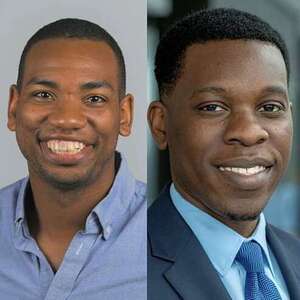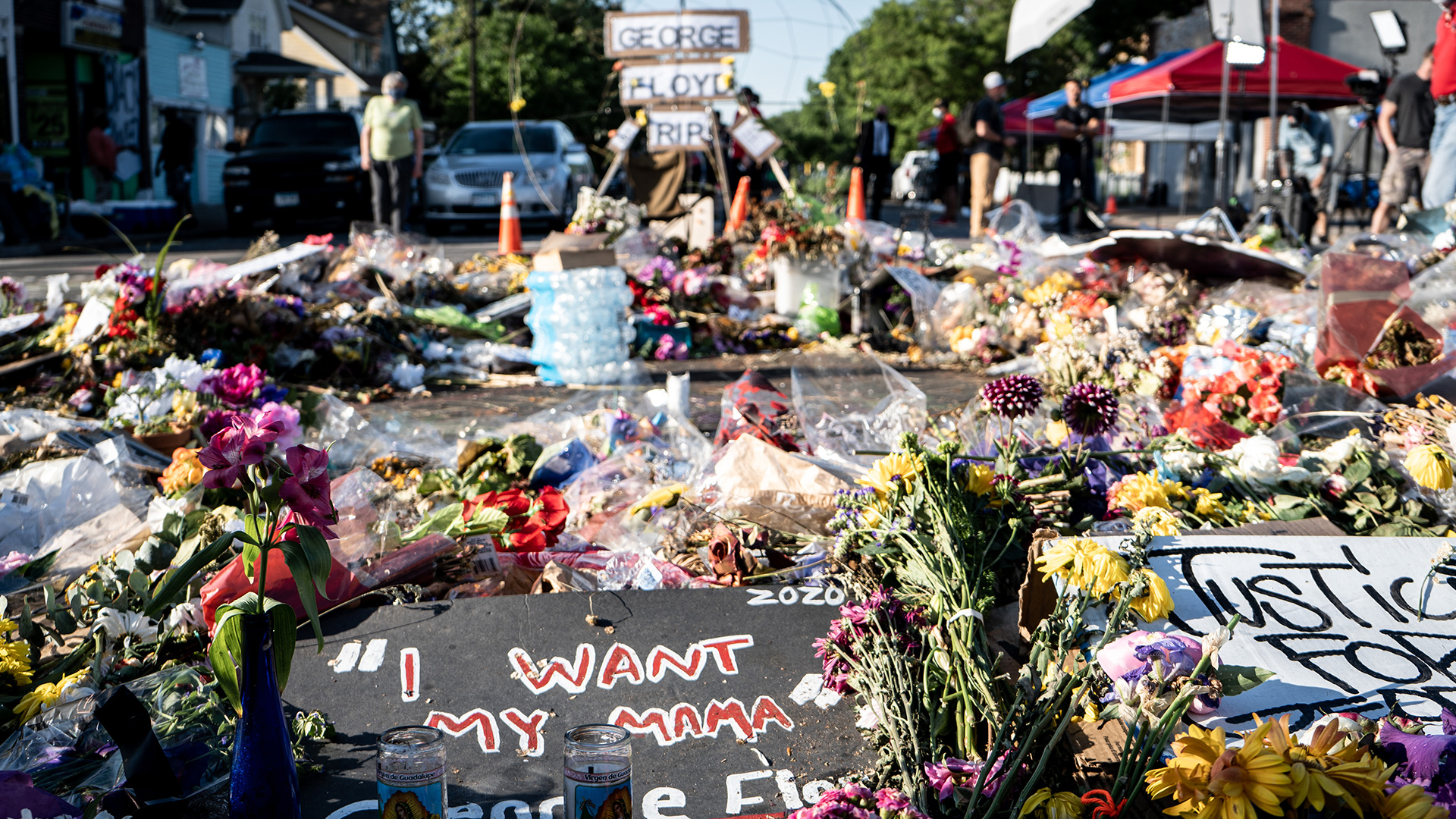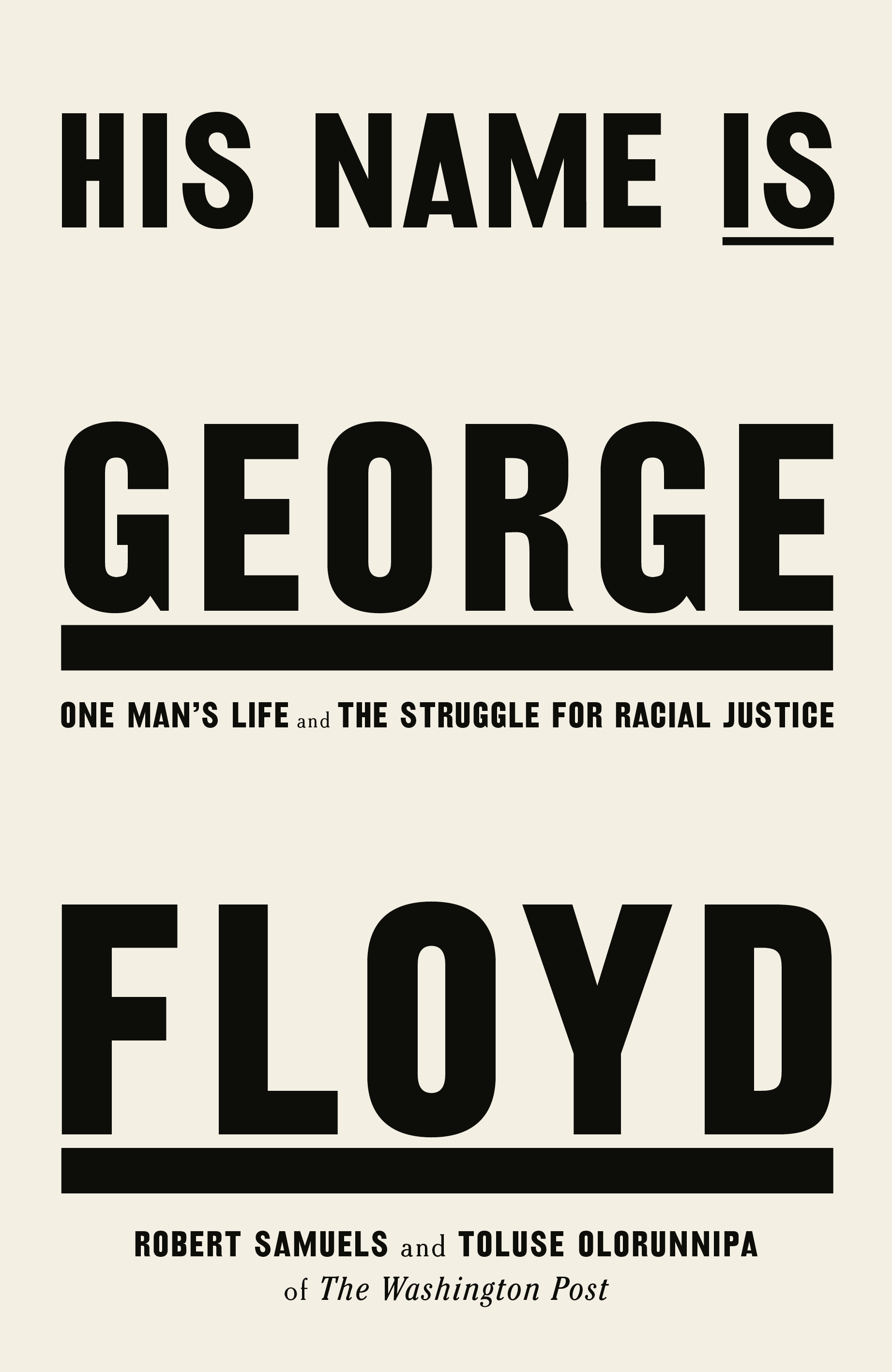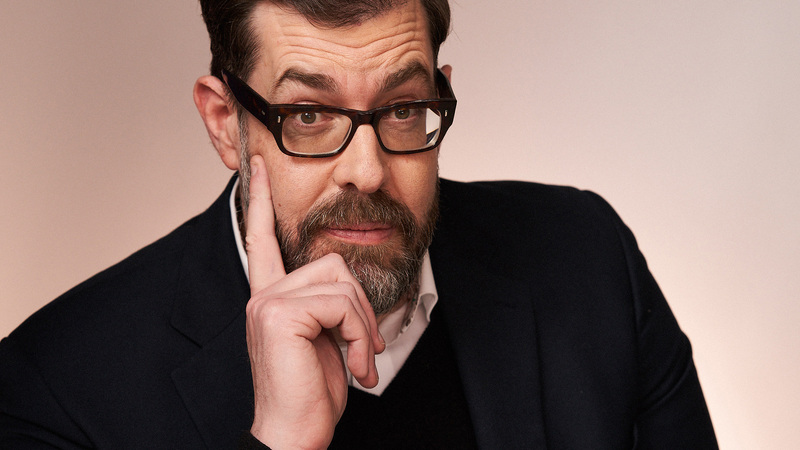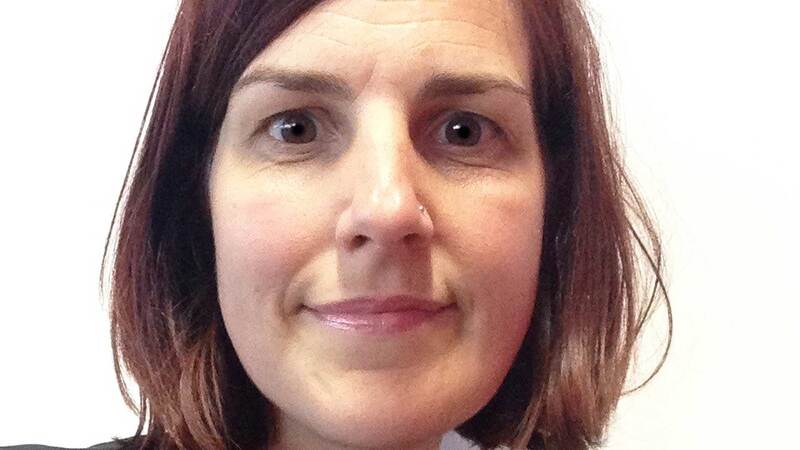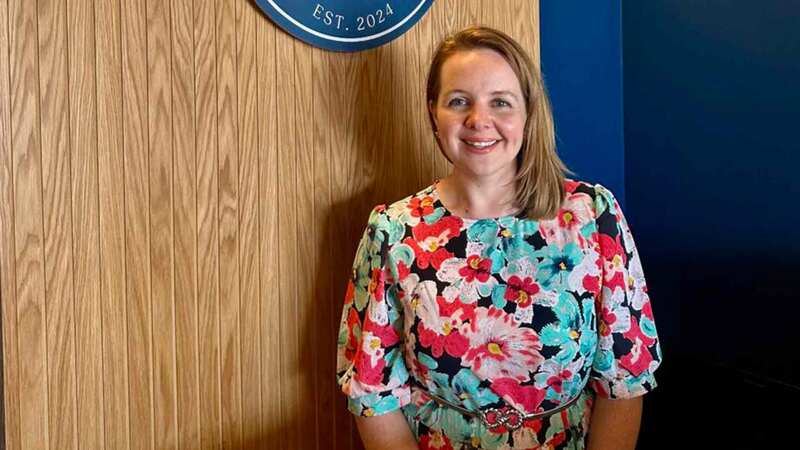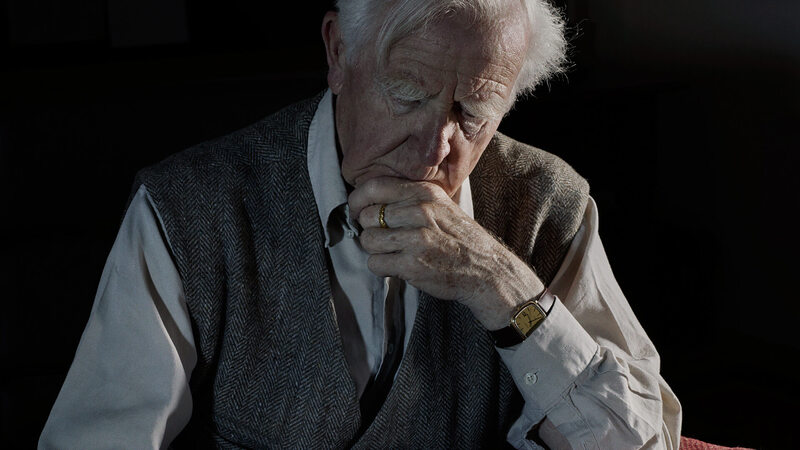You are viewing your 1 free article this month. Login to read more articles.
The making of His Name is George Floyd
The authors of His Name is George Floyd: One Man’s Life and the Struggle for Racial Justice discuss their writing and research of the book, and Floyd’s legacy.
Oh my, what a day to be Black,
Plan come together beautiful, we back
Facts, table turn we show you how to act
With respect + gratitude u better hear me we back…”
— George Floyd, undated writings
Before he would lose his life under the knee of a police officer, before the viral video of his death would turn him into a global icon for racial justice, before his name would be spoken by presidents, prime ministers and the Pope, George Floyd was a Black man with a pen, searching for his voice.
Floyd’s lyrical ode to Blackness, one of dozens of first-person writings we discovered while writing his biography, reflected a fleeting period of good fortune in a life beset by trials and troubles. While he wrote optimistically about the beauty of being Black, he understood well that many of the troubles he had faced during a lifetime of striving were made more difficult because of the colour of his skin.
For more than a year, we conducted hundreds of additional interviews with the people who understood Floyd best to craft an intimate portrait of the man millions only knew through his dying screams of “I can’t breathe”
As journalists, our journey to understand Floyd’s essence and the systemic barriers that buffeted his path began in the summer of 2020, in the weeks after his videotaped death sparked a worldwide movement for civil rights. Reporting alongside our colleagues at the Washington Post, we produced a six-part series that autumn, analysing how the various forms of institutional inequality that people were protesting against had been a part of Floyd’s story since birth.
When we decided to expand on the series and create a definitive biography of Floyd, we knew that searching for his voice would be key to understanding the man behind the historic movement.
For more than a year, we conducted hundreds of additional interviews with the people who understood Floyd best to craft an intimate portrait of the man millions only knew through his dying screams of “I can’t breathe.” Seeking to replace the iconographic image with the nuanced human being, we asked ourselves two essential questions: Who was George Floyd? And what was it like to live in his version of America? The search for those answers took us deep into the places he traversed during his life and brought us face to face with the people who knew both his voice and his story.
We sat for Sun-day dinner with Floyd’s large extended family, learning the history of his ancestors, who once attained wealth only to have it seized during an era of racial terror. We got haircuts from his barber, with whom he shared his deepest internal turmoil. We traversed Houston’s Third Ward with his closest friends, listening as they laughed over old memories of the playful jokester who would talk through movies only to ask about the plot afterward. We sat with his girlfriend, one of his brothers, Philonise, and other loved ones as they broke down in tears, flooded with grief over a life cut tragically short.
Laying foundations
While the remarkable candour of Floyd’s friends, family, lovers, teammates, roommates and others helped us re-create conversations and key scenes from his life, some of the most revealing details we found came through exclusive access to Floyd’s own written words. In rap lyrics he scribbled on loose paper, poems he sketched out on the back of receipts, and diary entries in which he agonised over his sins, Floyd laid bare his internal trauma.
Some of those writings ended up in the closet of his girlfriend, Courteney Ross. Floyd met Ross during a time in his life when things were looking up. He had left his hometown of Houston, Texas, in 2017, seeking redemption from a life tormented by prison, unemployment and addiction, and found stability and sobriety in Minneapolis, Minnesota. He was working, in love, and making progress toward his goal of becoming a truck driver.
“Plan come together beautiful, we back,” he wrote.
But the reprieve didn’t last long.
Floyd came home one night in October 2017 to find his roommate—a Black man who had gone through the same drug treatment programme he had recently completed—lying dead inside their apartment. The man had relapsed and overdosed.
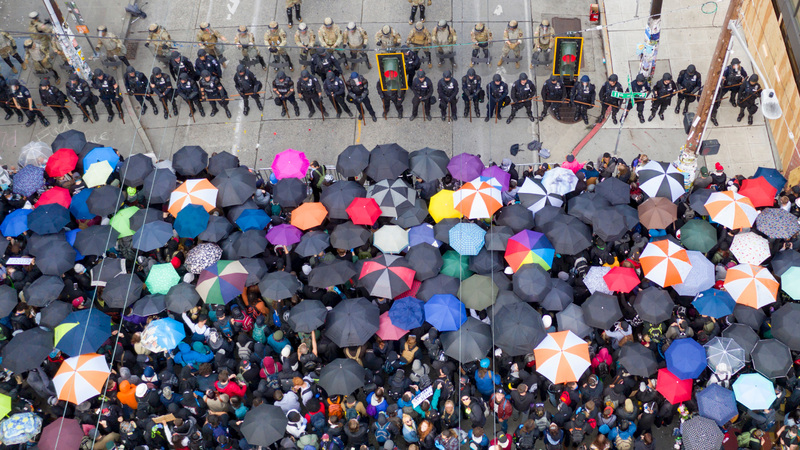
A few months later, Floyd’s mother died in Houston, passing away before her firstborn son had a chance to say goodbye in person. Faced with debilitating grief, Floyd found himself drawn back to the twin demons of addiction and despair he had fled his hometown to escape. “I went through the ringer three times over after God called her in,” Floyd wrote in a text message to his aunt after the death of the woman he would cry out for in his final moments.
In analysing the words Floyd wrote during different stages of his life, we were able to gain a better sense of his aspirations, his limitations and his soul. The picture that emerged was that of a man who faced his troubles with hope and perseverance. And while Floyd made his fair share of mistakes, many of which we document in the book, he acknowledged them with humility and a belief that he could make things right if given a shot.
“Oh heavenly father we are tore down, please help to build us back up,” Floyd wrote in a diary entry in the mid-Noughties, when he was a little over 30 years old. “Please forgive me... I’m sorry for turning my back on you.”
In another entry from around the same period, he lamented the struggles he faced due to pending court cases and other hardships. “Sometimes we have to go through things to get to where we are going. I shouldn’t worry knowing I put everything in God’s hand,” Floyd wrote. “But I’m only human.”
Resonating globally
The approaching two-year anniversary of Floyd’s inhumane murder has sparked fresh questions over how much has really changed since the largest protest movement in history unfurled in large cities and small hamlets across the globe. From Peckham to Portland, from Hackney to Houston, activists and everyday citizens are questioning what has become of the myriad efforts to combat institutional racism since 25th May 2020. Picking up where the Washington Post series left off, our book devotes several chapters to analysing the aftermath of Floyd’s death. Highlighting the experiences of several people who have fought to take up Floyd’s cause and speak on his behalf, we trace the triumphs and trials of the Black Lives Matter movement and the broader fight for racial justice.
Our reporting follows Floyd’s girlfriend, a white woman trying to figure out the appropriate way to mourn; Philonise, a truck driver who found new purpose in seeking justice for his brother; and President Joe Biden, who ascended to high office on a promise to heal the nation’s racial wounds.
The failure of the American Congress to pass a policing reform bill in Floyd’s name and the political backlash against discussions of systemic racism indicate a fading of momentum in the global movement
In interviews with the three of them and several local activists and officials in Minnesota, we saw how they grappled with the heavy responsibility of using their voices to honour the legacy of a man who can no longer speak for himself. While they each acknowledge some measure of progress—the officer who killed Floyd was convicted of murder, and since then several high-profile killings of Black people have led to convictions in the US and the UK—there is a palpable fear that the world has moved on.
The failure of the American Congress to pass a policing reform bill in Floyd’s name and the political backlash against discussions of systemic racism indicate a fading of momentum in the global movement. That fading momentum risks a waning legacy about the impact of Floyd, a man who was so beloved that so many dedicated their lives to keeping his story alive.
“My brother is more than just a video,” Philonise Floyd told Biden last year in a scene depicted in our book.
“We want to make sure people know who he is.”
Award-winning journalists Toluse Olorunnipa and Robert Samuels are the co-authors of His Name is George Floyd: One Man’s Life and the Struggle for Racial Justice. The book was published in the UK in hardback yesterday by Bantam Press (19th May, 9781787635838) with an r.r.p. of £20.
